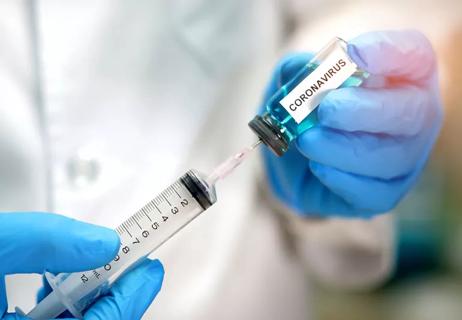These step-by-step instructions could save a life

The 976 words in this article could help you save the life of someone experiencing a severe allergic reaction.
Advertisement
Cleveland Clinic is a non-profit academic medical center. Advertising on our site helps support our mission. We do not endorse non-Cleveland Clinic products or services. Policy
Using an epinephrine auto-injector — more commonly known by the brand name EpiPen® — can help reverse symptoms of anaphylaxis. “It’s really the first line of defense,” says allergist and immunologist Anuja Kapil, MD.
It’s critical to use the device quickly and correctly to administer the medication. EpiPens and other auto-injectors are designed with simplicity in mind, with similar instructions.
To use an EpiPen:
“Minutes matter when you’re dealing with anaphylaxis,” stresses Dr. Kapil. “Knowing what to do in the situation is important.”
So, when should you use an EpiPen or similar auto-injector? Basically, at the first sign of a severe allergic reaction, says Dr. Kapil. Sound-the-alarm symptoms include:
Advertisement
Many people with severe allergies also report a “sense of doom” as their body begins reacting to an allergen, whether it’s a certain food, an insect bite, medication or another trigger. This feeling may start before symptoms become visible.
Take any symptom or sign of anaphylaxis seriously, advises Dr. Kapil. Don’t delay using an EpiPen or other auto-injector. “We always suggest erring on the side of using it if there’s any hint that a serious reaction is underway,” she says.
The simplest way to define anaphylaxis is as a “severe allergic reaction.” Here’s what’s happening within your body.
The explanation starts with your immune system, which serves as a kind of internal bodyguard. Its job is to snuff out foreign invaders — like viruses and bacteria — that pose a risk to your health.
If you’re allergic to something, your immune system views that allergen as a serious threat — and then responds very aggressively to its presence.
Your immune system releases histamines and other chemicals to attack the allergen. The problem? Sometimes, this defense system overreacts and starts a chain reaction that can cause more harm than good.
This overreaction response can lead to inflammation (which can cut off breathing) and a widening of blood vessels (which can drop blood pressure to dangerous levels).
A dose of epinephrine is essentially an adrenaline boost that helps your body get past its out-of-control allergic response, explains Dr. Kapil.
The medication works to constrict (narrow) dilated (widened) blood vessels to help your blood pressure rebound and bring down swelling. It also relaxes muscles in your lungs to open up airways and make breathing a bit easier.
In addition, epinephrine applies brakes to your immune system’s release of histamines to halt the reaction to the allergen.
Just because an epinephrine auto-injector is relatively easy to use doesn’t mean there aren’t questions. Let’s get some answers.
A: The needle on an auto-injector is designed to go through jeans or pants. “Every second counts, so the idea is to deliver the epinephrine quickly,” says Dr. Kapil. “You don’t want to lose time trying to take pants off.”
A: Absolutely. The auto-injector is made for self-use.
However, if a reaction is severe, you may have difficulty administering the medication. Make sure that people who are around you regularly — family, friends, co-workers, teachers, etc. — know how to use your auto-injector and where it’s located.
Advertisement
A: The dosage is different between children and adults, but the delivery technique is exactly the same. Just jab the thigh and let the epinephrine release. Each auto-injector is filled with a prescribed amount of the medication.
A: It’s always a good idea to hold someone’s leg in place while inserting the injector and for three seconds afterward. “People naturally move to jerk away,” says Dr. Kapil. “Keep their leg still to make sure the epinephrine gets delivered.”
There’s no option to reinsert, so you’ve literally got one shot. Make it count.
A: A second dose can be administered if the first injection doesn’t reduce symptoms within five to 15 minutes and the reaction continues to worsen. (This is why auto-injectors typically come in packs of two.)
A: Prescriptions for epinephrine auto-injectors typically last a year and should be refilled before they expire. That being said, sometimes people don’t get that update.
“If an expired auto-injector is all you have in an emergency situation, use it — but that should not be your plan,” says Dr. Kapil. “It’s not going to hurt you, but it might not help as much as it should.”
Using an EpiPen or other auto-injector is not the end of medical care for a severe allergic reaction. It’s the start.
Advertisement
“Your symptoms can come back,” notes Dr. Kapil. “It’s impossible to predict whether there’s going to be a second wave to the reaction. Given that, you need to be closely monitored in a medical setting.”
So call 911 immediately if a reaction is bad enough to require an EpiPen.
Advertisement
Learn more about our editorial process.
Advertisement

Even if you weren’t allergic to an ingredient before, you could develop an allergy over time

How to handle breathing difficulties, rashes, hives and more

The short answer from a pediatric allergist/immunologist

Get the facts before assuming the worst

A dermatologist’s advice for finding some relief for that itchy rash

EpiPens are in short supply

Redness, pain and blurred vision? See your doctor now

Most recommended precautions center around minimizing bruising or swelling

Type 2 diabetes isn’t inevitable with these dietary changes

Applying a hot or cold compress can help with pain